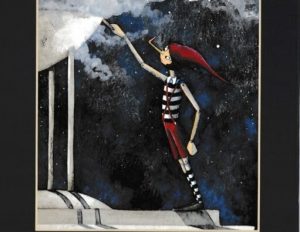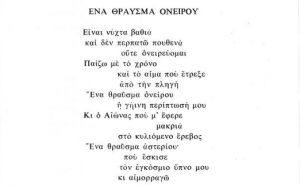Πήλινο ανθρωπόμορφο ειδώλιο της Πρώιμης Χαλκοκρατίας και οστέινα του τύπου της “σπάτουλας” από το Κουκονήσι (Λήμνος)
Συγγραφέας: Μπουλώτης Χρήστος
Έκδοση: Μέρος του συλλογικού έργου Έξοχος άλλων – Τιμητικός τόμος για την καθηγήτρια Εύα Σημαντώνη-Μπουρνιά, Υπουργείο Πολιτισμού και Αθλητισμού-Οργανισμός Διαχείρισης και Ανάπτυξης Πολιτιστικών Πόρων, Αθήνα 2021
Επιμέλεια έκδοσης: Μπίρταχα Κική
Αριθμός σελίδων: 14 (Σελίδες 529-542)
ISBN: 9789603865056
Περιγραφή: A clay anthropomorphic figurine, of extremely schematic form, of the flattened “protome” type, which was discovered at the prehistoric settlement of Koukonisi, in an advanced or final horizon of the Early Bronze Age, triggered the detailed study of Lemnian coroplastic production of the 3rd and 2nd millennium BC. The interest for this particular find is further increased, since clay figurines of this period in other extensively excavated sites of the island (Poliochni, Myrina), are generally extremely rare, in contrast to the relevant finds from Troy and particularly Thermi of neighbouring Lesbos and of course the Cyclades.
Besides matters of morphology and technique of the figurines, their excavation context and their extreme frequency variations from one culture to another (or even among neighbouring sites also), are examined, as well astheir semantic correlations as codified bearers of ideology.
In this investigation I enlist, among others, the bone fine artifacts of the “spatoula” type, again from Koukonisi of the same period, with parallels from Poliochni, Troy and other settlements of the same area, which, as I believe, are not micro-tools, but schematic human figures intended for symbolic use (probably personal amulets?). After the total absence during the Middle and the early Late Bronze Age of clay figurines (anthropomorphic or zoomorphic), they reappear at Koukonisi during the 14th and 13th centuries BC, as eloquent signs of Mycenaean “presence” along with the ample Mycenaean pottery. Finally we promote here the idea that, the Lemnian type of clay female figurine of the early historic period, with the characteristic symbolic stature of the upraised hands, has probably Mycenaean origins.











